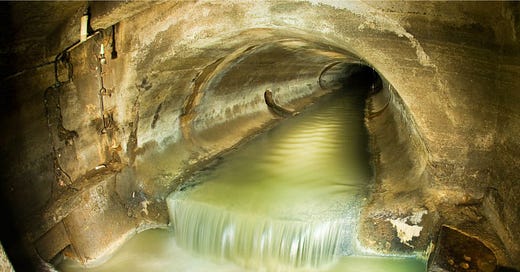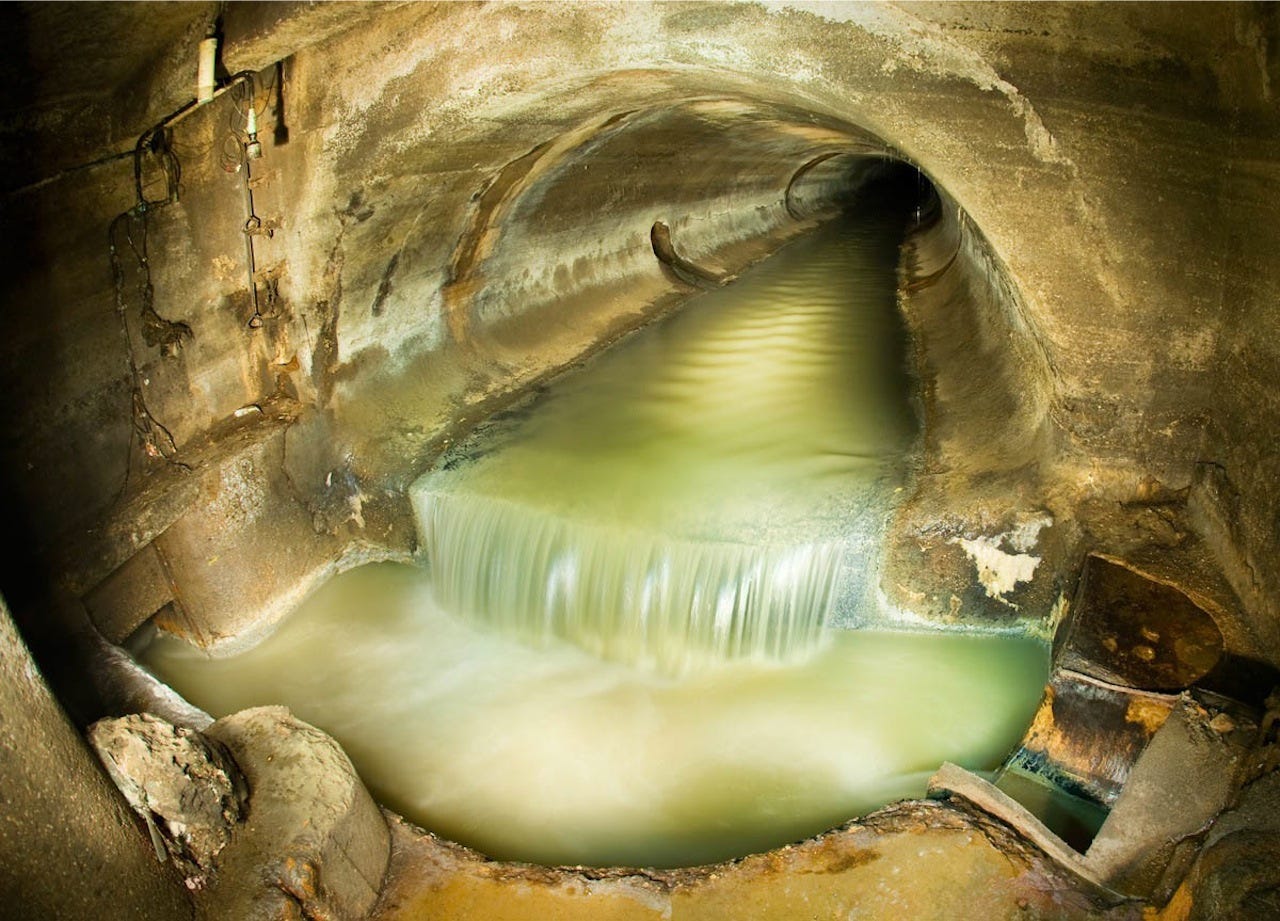The Forgotten Streams of New York
An underground explorer ventures deep below to discovers his city’s lost lifeblood.
On a cold day in the Bronx last winter, I descend underground and splash into the freezing water of Tibbetts Brook. Tearing the tough rubber of my hip-high wader boots, I half-climb, half-fall along the stone wall where excess pond water flows into this dark tunnel. Immediately, my soaked legs begin to go numb from the cold. I’m excited nonetheless: this waterway that I had seen only on century-old maps now seems fully real, glinting in the light of my headlamp as it swirls through the eight-foot-wide brick tunnel.
While few modern-day New Yorkers have heard of Tibbetts Brook, it is one of the city’s great lost streams—one of dozens of trickling waterways, both named and anonymous, that were once the lifeblood of a burgeoning metropolis. As New York grew in the seventeenth, eighteenth, and nineteenth centuries to become the world’s greatest port and its most famous city, it depended not only on the dominant Hudson River with its undrinkable saline water, but also …
Keep reading with a 7-day free trial
Subscribe to Narratively to keep reading this post and get 7 days of free access to the full post archives.




